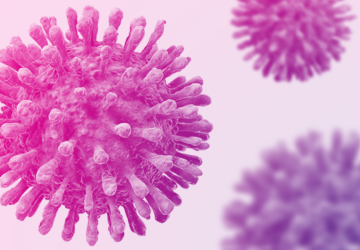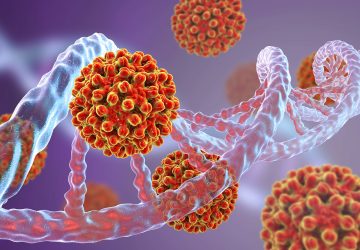The global epidemic and spread of the Human Immunodeficiency Virus (HIV) and the resulting disease called AIDS (acquired immunodeficiency syndrome) has reached a death toll of more than 30 million since the outbreak began in the 1980s.1,2 Since then, we have made major strides in providing anti-retroviral (ART) drugs to more than 24 million people worldwide, but more needs to be done when it comes to fighting the spread of this devastating disease.2
In 2018, more than one million new infections were recorded around the world, providing some insight into how we have failed to prevent the spread of HIV, especially when a simple blood test is all that is needed to test patients.1 This is where Dried Blood Spotting (DBS) Technologies may make a difference in helping us to not only prevent new infections, but to also adequately treat those already on ART drug regimens.
DBS is seeing a revival as companies are creating new iterations for easier use and expanding on the ability to safely ship from any corner of the world.3 This allows researchers who are studying and treating HIV/AIDS to reach those vulnerable populations living in remote areas or developing countries,4 and those who might be stigmatized to get testing when available. In the U.S. alone, 79 percent of all new infections occurred in the youth aged 20 to 24.5 The young in developing countries are the least likely to be tested or know they are infected due to lack of immediate symptoms.6
Though it’s well understood that early detection is a key component to deterring the virus from spreading, privacy concerns along with access, both logistically and financially, to testing has been an ongoing problem.7 Circumventing the need for clinic visits with a self-sampling DBS alternative, especially in underdeveloped regions, could increase their likelihood of getting tested and for the monitoring of ART drug regimes.8
With the basic infrastructure of a postal service in place, just about anyone can take a blood sample by themselves, without the need for a trained technician, by using DBS collection devices directly inside their home. With only a few drops of dried blood, someone can ship their sample through the mail and get a clinical result within days. These dried blood micro-samples are considered nonregulated and non-biohazardous material, which simply requires a basic triple-packaging system for shipping via post.9
So why has this method not seen wider adoption? Accuracy issues plague the original devices, and the sensitivity of analyzer technology has not caught up with the processing requirements of micro-samples, effectively keeping this option on the periphery for many years.10
The good news here, dried blood micro-sampling technology has been quietly evolving in the background for some time now. As advanced analyte detection methods become ever more sensitive, paired with the automation of sample processing for DBS, the idea of self-sampling for clinical diagnostics is becoming an option. Some contemporary DBS devices are even now capable of separating serum and plasma, which are key blood components to detecting HIV as early as nine days after infection using RNA viral load testing.11 DBS is quickly being reassessed and viewed as a competent, more cost-effective way for early detection, as well as the monitoring of ART drugs.12,13 Creating an uncomplicated, remote self-sampling procedure for the public could assist in optimizing methods for early HIV detection and preventing its further spread.
Lastly, point-of-care testing – specifically for HIV – has been available for the past few years in most developed countries. It is forecasted for continued growth, providing not only the ability to be tested remotely, but offering a high degree of autonomy. However, for these point-of-care tests, false-positive results have been cited with off-the-shelf options, such as rapid tests using oral fluid, spotlighting the need for a solution that involves a collection of blood biomarkers. DBS, with its evolution over the last decade and its increased awareness by those who are researching grave illnesses, such as HIV/AIDS, is the future of sample collection and the way patients can access healthcare.
References:
- Mann, J.M. (1989) ‘AIDS: A worldwide pandemic’ in Current Topics in AIDS Volume 2, edited by Gottlieb, M.S. et al. John Wiley & Sons
- UNAIDS. Global HIV & AIDS statistics — 2019 fact sheet. Retrieved from https://www.unaids.org/en/resources/fact-sheet.
- Chepkemoi, J. (2017, April 12). Countries with the Highest Rates of HIV/AIDs. Retrieved from https://www.worldatlas.com/articles/countries-with-the-highest-rates-of-hiv-aids.html.
- Dowling, W., Veldsman, K., Katusiime, M. G., Maritz, J., Bock, P., Meehan, S.-A., … Zyl, G. U. V. (2018). HIV-1 RNA testing of pooled dried blood spots is feasible to diagnose acute HIV infection in resource limited settings. Southern African Journal of Infectious Diseases, 33(2), 50–53. doi: 10.4102/sajid.v33i2.6
- HIV Prevention through Early Detection and Treatment of Other Sexually Transmitted Diseases — United States Recommendations of the Advisory Committee for HIV and STD Prevention. (n.d.). Retrieved December 15, 2019, from https://www.cdc.gov/mmwr/preview/mmwrhtml/00054174.htm.
- Dr. John Kim – Public Health Agency of Canada – https://www.youtube.com/watch?v=-zX3jtCRfoI
- https://www.cdc.gov/labstandards/pdf/nsqap/Bloodspot_Transportation_Guidelines.pdf
- Freeman, J. D., Rosman, L. M., Ratcliff, J. D., Strickland, P. T., Graham, D. R., & Silbergeld, E. K. (2018, April 1). State of the Science in Dried Blood Spots. Retrieved December 12, 2019, from http://clinchem.aaccjnls.org/content/64/4/656
- TheBodyPro. (2012, August 1). Testing for HIV. Retrieved December 18, 2019, from https://www.thebodypro.com/article/testing-for-hiv
- Rottinghaus, E. K., Ugbena, R., Diallo, K., Bassey, O., Azeez, A., Devos, J., … Yang, C. (2012). Dried Blood Spot Specimens Are a Suitable Alternative Sample Type for HIV-1 Viral Load Measurement and Drug-Resistance Genotyping in Patients Receiving First-Line Antiretroviral Therapy. Clinical Infectious Diseases, 54(8), 1187–1195. doi: 10.1093/cid/cis015
- Dr. Nitika Pant Pai: Innovative HIV testing technologies and approaches https://www.youtube.com/watch?v=64wIJiccwl8
- https://www.who.int/hiv/mediacentre/news/hiv-self-testing-increases/en
- Jafa, K., Patel, P., Mackellar, D. A., Sullivan, P. S., Delaney, K. P., Sides, T. L., … Branson, B. M. (2007). Investigation of False-Positive Results with an Oral Fluid Rapid HIV-1/2 Antibody Test. PLoS ONE, 2(1). doi 10.1371/journal.pone.0000185 https://www.ncbi.nlm.nih.gov/pmc/articles/PMC1779621



